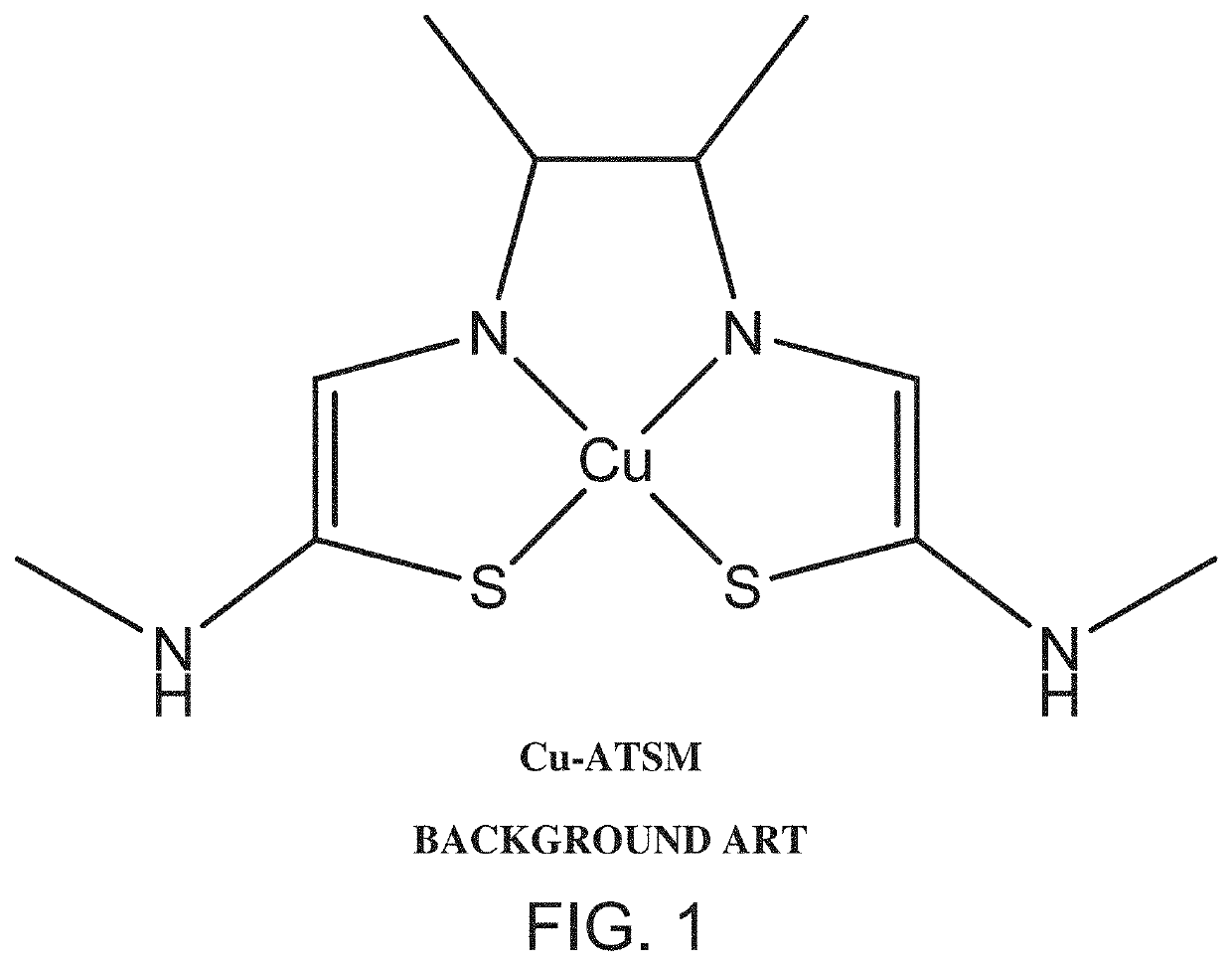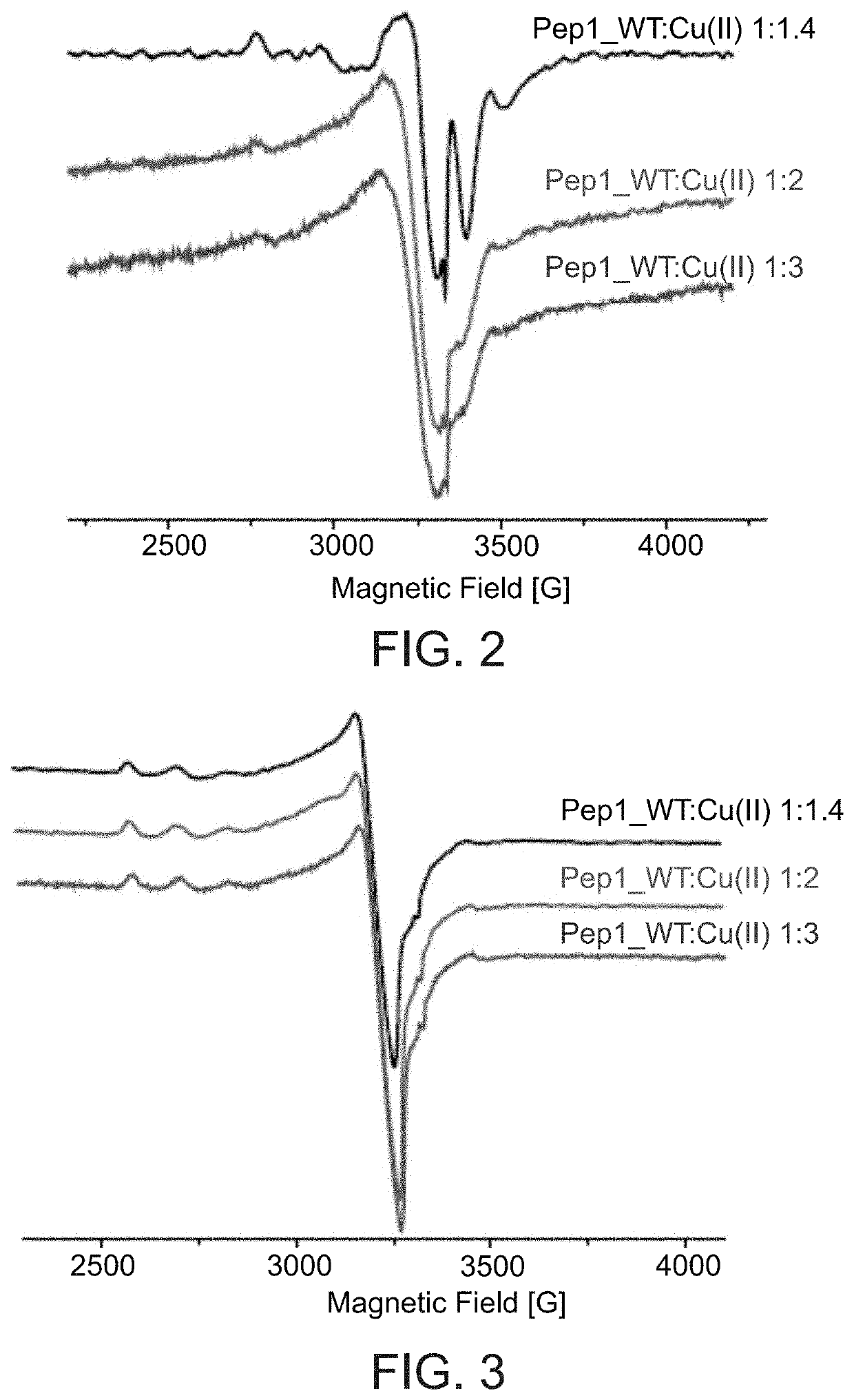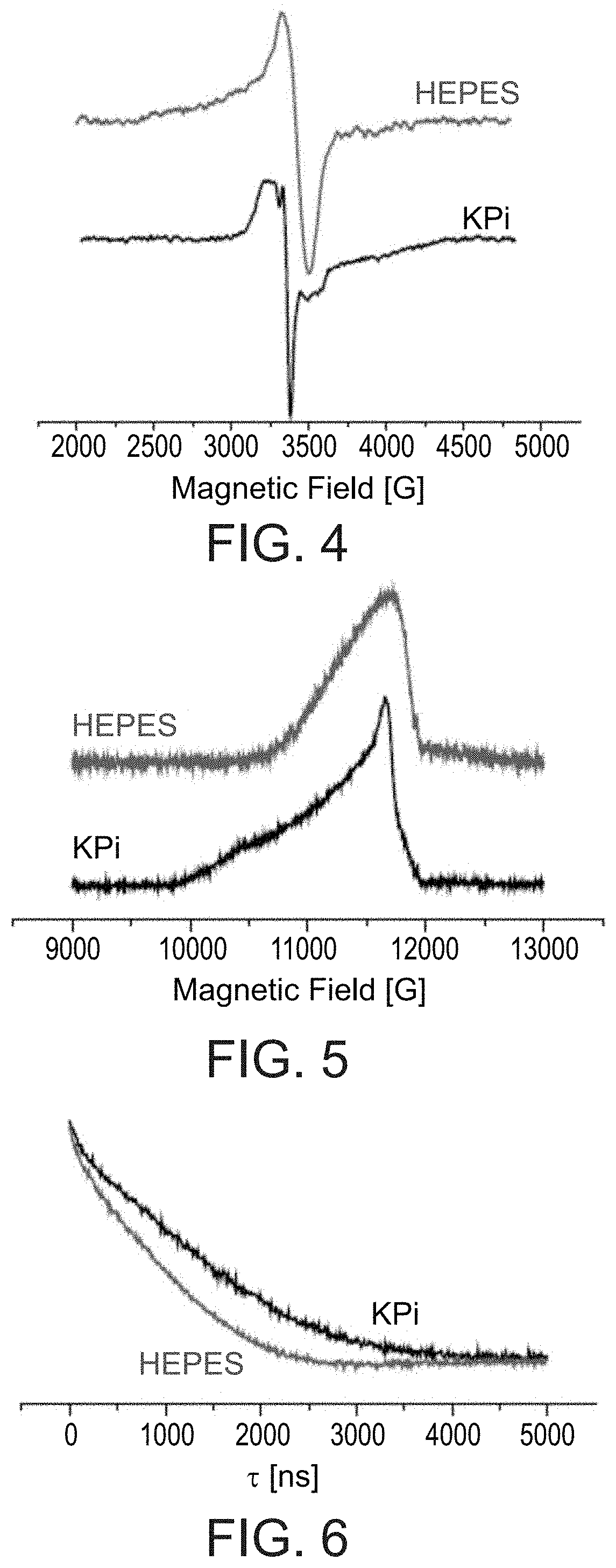Copper-containing complex and uses thereof
- Summary
- Abstract
- Description
- Claims
- Application Information
AI Technical Summary
Benefits of technology
Problems solved by technology
Method used
Image
Examples
example 1
Coordination of Cu(II) and Cu(I) to N-Terminal Portion of Ctr1
[0554]Cu(II) Coordination to N-Terminal Portion of Ctr1:
[0555]In order to investigate Cu(II) binding to the extracellular (N-terminal) domain of Ctr1, the following peptides were prepared:
Pep1 (wild-type)-(SEQ ID NO: 1)MDHSHHMGMSYMDSPep2 (G8A mutant)-(SEQ ID NO: 2)MDHSHHMAMSYMDSPep3 (H3A mutant)-(SEQ ID NO: 3)MDASHHMGMSYMDSPep4 (H5A mutant)-(SEQ ID NO: 4)MDHSAHMGMSYMDSPep5 (H6A mutant)-(SEQ ID NO: 5)MDHSHAMGMSYMDS
[0556]The mutations of Pep2-Pep5 (converting a His or Gly residue to Ala) were based on reports that Cu(II) preferentially binds His and Gly [Migliorini et al., J Biol Inorg 2014, 19:635-645].
[0557]The choice of the buffer is important since it can affect the Cu(II) coordination. HEPES, KPi, NEM, and Tris buffers have been reported in studies of Cu(II) coordination. It has been reported that in Tris buffer the pH is dependent on the temperature, and therefore is not suitable for EPR measurements, with KPi buffer ...
example 2
Preparation of Cu(II)-Ligand-Peptide Complexes
[0617]Cu(II) complexes are prepared by contacting Cu(II) ions (optionally comprising a radioactive isotope such as 64Cu) with a copper ligand having 2, 3 or 4 atoms (preferably nitrogen and / or oxygen atoms) which can be coordinated to Cu(II) upon complexation and with a water-soluble peptide having 2 or 3 (preferably 3) Cys, Met and / or His residues, at least one of which is Met or Cys.
[0618]The ligand is optionally a ligand depicted in FIG. 28, or a peptide having the formula W1—X1—X2—X3—W2 (SEQ ID NO: 44) or W1—X1—X2—W2 (SEQ ID NO: 45), wherein W1 and W2 are each independently a His, Met or Gly residue, and each of X1, X2 and X3 is independently an Ala or Gly residue (e.g., the ligand being a HAAH (SEQ ID NO: 11), HAAM (SEQ ID NO: 12) or HAAG (SEQ ID NO: 13) peptide).
[0619]The water-soluble peptide optionally comprises at least one W3—X4—X5—W4 (SEQ ID NO: 46) region, wherein W3 and W4 are each independently a His, Met or Cys residue (pr...
example 3
Cu(II)-Ligand-Peptide Complexes in Physiological Environment
[0632]In order to assess the behavior of a Cu(II)-ligand-peptide complex under physiological conditions, the coordination of Cu(II) was investigated by EPR spectroscopy following exposure of a Cu(II)-IDA-Met1 complex (prepared as described in Example 2) to the copper transporter Ctr1 (in a purified state), which plays a central role in the cellular copper cycle. For comparison, the behavior of Cu(II)-IDA (without a peptide) was also investigated under such conditions. EPR spectra were interpreted by comparison to simulated spectra prepared using the EasySpin™ computational package.
[0633]As shown in FIG. 34, the EPR spectrum of a Cu(II)-IDA complex (without a peptide) is consistent with a simulated EPR spectrum of a 2N2O coordination of Cu(II), suggesting that the Cu(II) is coordinated to two IDA molecules (each having a single nitrogen atom). Furthermore, in the presence of Ctr1, the coordination remains 2N2O, but with a na...
PUM
| Property | Measurement | Unit |
|---|---|---|
| Fraction | aaaaa | aaaaa |
| Mass | aaaaa | aaaaa |
| Volume | aaaaa | aaaaa |
Abstract
Description
Claims
Application Information
 Login to View More
Login to View More - R&D
- Intellectual Property
- Life Sciences
- Materials
- Tech Scout
- Unparalleled Data Quality
- Higher Quality Content
- 60% Fewer Hallucinations
Browse by: Latest US Patents, China's latest patents, Technical Efficacy Thesaurus, Application Domain, Technology Topic, Popular Technical Reports.
© 2025 PatSnap. All rights reserved.Legal|Privacy policy|Modern Slavery Act Transparency Statement|Sitemap|About US| Contact US: help@patsnap.com



